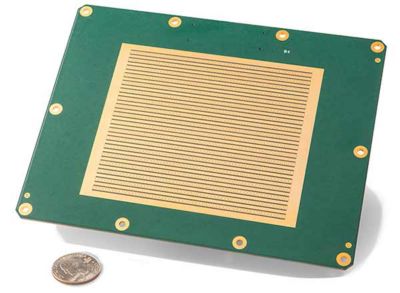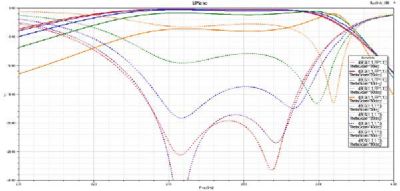-
United States -
United Kingdom -
India -
France -
Deutschland -
Italia -
日本 -
대한민국 -
中国 -
台灣
-
Ansys is committed to setting today's students up for success, by providing free simulation engineering software to students.
-
Ansys is committed to setting today's students up for success, by providing free simulation engineering software to students.
-
Ansys is committed to setting today's students up for success, by providing free simulation engineering software to students.
-
Contact Us -
Careers -
Students and Academic -
For United States and Canada
+1 844.462.6797
ANSYS BLOG
October 3, 2018
Designing 5G Cellular Base Station Antennas Using Parametric Studies
There is only so much communication bandwidth available. This will make it difficult to handle the boost in cellular traffic expected from the 5G network using conventional cellular technologies.
In fact, cellular networks are already running out of bandwidth.
This severely limits the number of users and data rates that can be accommodated by wireless systems.
One potential solution is to leverage beamforming antennas. These devices transmit different signals to different locations on the cellular network simultaneously over the same frequency.
Pivotal Commware is using Ansys HFSS to design beamforming antennas for cellular base stations that are much more affordable than current technology.
How 5G Networks Will Send More Signals on Existing Bandwidths
Traditionally, cellular technologies — 3G and 4G LTE — crammed more signals on the existing bandwidth by dividing the frequencies into small segments and splitting the signal time into smaller pulses.
The problem is, there is only so much you can do to chop up the bandwidth into segments.
Alternatively, Pivotal’s holographic beamforming (HBF) antennas are highly directional. This means they can split up the physical space a signal moves through.
A 28 GHz antenna for a cellular base station.
This way, two cells in two locations can use the same frequency at the same time without interfering with each other.
Additionally, these HBF antennas use varactor (variable capacitors) and electronic components that are simpler and more affordable than existing beamforming antennas.
How to Design HBF Antennas for 5G Cellular Base Stations
Antenna design companies — like Pivotal — are always looking to design devices that optimize cost, size, weight and power (C-SWaP) and performance.
A parametric study of Pivotal’s HBF designs allowed them to look at a large portion of their design space and optimize for C-SWaP and roll-off. This study looks at roll-off as a function of degrees from the centerline of the antenna.
So, how was Pivotal able to account for C-SWaP and performance so thoroughly?
Traditionally, this was done by building prototypes, finding flaws, creating new designs and integrating manually.
Meeting a product launch with an optimized product using this manual method is grueling.
Pivotal instead uses Ansys HFSS to simulate their 5G antennas digitally. This allows them to assess their HBF antennas and iterate their designs faster using parametric studies.
For instance, Pivotal wants to optimize their design for performance characteristics like roll-off. To do so they can plug in the parameter values, run simulations with these values and see how each parameter affects roll-off.
By setting up parametric studies, Pivotal assess which parameters affect performance and C-SWaP the most. From there they could weigh different trade-offs until they settled on an optimized design that accounted for all the factors they studied.
To see how Pivotal set up their parametric studies and optimize their antenna designs, read 5G Antenna Technology for Smart Products.














